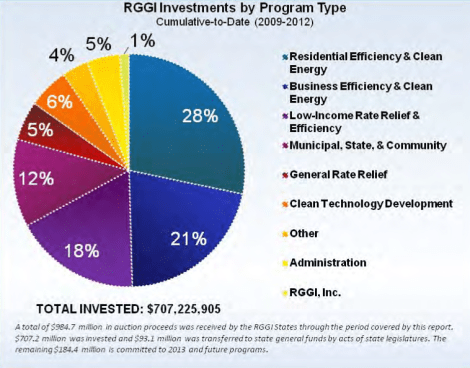How do you turn $1 billion into $2 billion, all the while helping to slow down global warming? By capping carbon dioxide pollution and charging for emissions permits, then plowing the revenues into clean energy and energy-efficiency programs.
The Regional Greenhouse Gas Initiative, a carbon-trading program that covers nine Northeast and Mid-Atlantic states, charged power plants about $1 billion for the right to pollute the climate from 2009 to 2012. Of that, $707 million has so far been invested into green programs, and $93 million has been transferred into states’ general funds, according to a new RGGI report.
Two-thirds of the investments have been used to help utility customers cut back on the amount of power that they use. Those efficiency improvements are eventually expected to save 800,000 households and 12,000 businesses more than $1.8 billion in energy bills.
Spending on clean energy programs, such as solar panel subsidies, are expected to save an additional $73 million. And $122 million has been handed back to utility customers in the form of direct rate relief.
Of course, carbon trading isn’t ultimately meant to be about turning a profit. It’s supposed to reduce the amount of greenhouse gases that end up in the atmosphere. And so far RGGI says it has reduced CO2 pollution by 8 million tons. That’s a difficult quantity to envision, so think about it this way: By 2012, power plants in the region were emitting 40 percent less CO2 than in 2005.
Here’s a graph from the report showing how RGGI is spending the proceeds of its carbon auctions:
Correction: Two-thirds of RGGI’s investments have been used to fund energy efficiency programs — not three-quarters as we originally reported.




